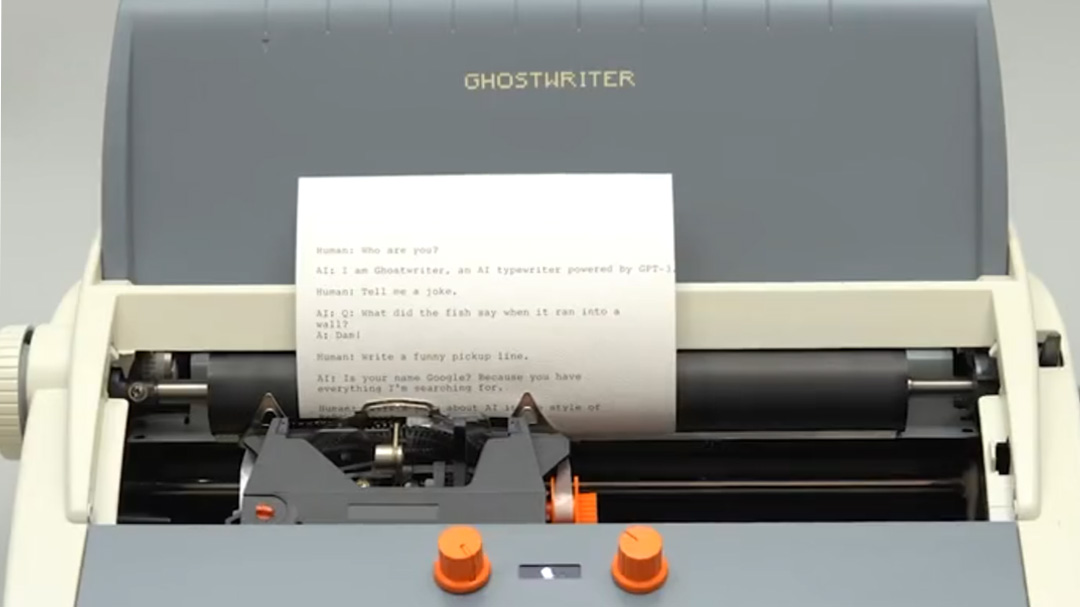Chatbots have been a staple of the internet experience for almost as long as I can recall. I remember playing with them as a kid, giggling at the dumb things you could get them to say, but inevitably getting bored pretty quickly. Back then they were novel, but couldn’t remember context and got repetitive fast. Still, messing with chatbots was one of the safer forms of fun to be found for a child on the scary world wide web.
Rather than fade into a distant memory as tech and the internet evolved, chatbots and AI have instead levelled up (opens in new tab), especially recently. Chatbots are being used by big companies like Microsoft to help improve the Bing experience (opens in new tab), and Meta to claim Zuck is cooler than Dragon Age (opens in new tab), giving off some real Solas energy. In much cooler projects, one tinkerer has turned a chatbot into a haunted typewriter which is much more deserving of an inquisition.
As Ars Technica (opens in new tab) notes, this wonderful project was created by Arvind Sanjeev (opens in new tab) using an electric Brother AX-325 typewriter and OpenAI’s GPT-3 powered ChatGPT software. The keyboard signals are pumped into an Arduino using a driver that can read and write the keystrokes for the ghostly printing.
This sends the information to a Raspberry Pi which interfaces with the GPT-3 API. It sends back the chat content which the typewriter then creepily types out by itself, keys moving like a keyboard as if possessed. Sanjeev has amusingly dubbed this creation Ghostwriter, and you can get a look at it on the Twitter thread (opens in new tab) where he further explains its development.
This physical chatbot can do more than just hold an asinine conversation. Thanks to the power of advanced AIs it can also extrapolate on text it’s given. This could mean help finishing a sentence, a poem, or a story, or more likely just seeing what the AI can come up with at any time.
To gain some control over this Sanjeev added a pair of knobs you can use to dial in the level of the Ghostwriter’s creativity. They sit on either side of a very cute little LED display which responds to the adjustments. But this isn’t about squeezing the AI out of Ghostwriter, more about giving people the ability to choose how we interact with it to create something new.
“I wanted to create a mindful intervention that allows you to take a moment to breathe and reflect on the new creative relationship we are forming with machines,” Sanjeev explains in a series of tweets. “The calm meditative interface of a vintage typewriter takes away all the digital distractions and takes us on an emotional journey through paper and ink.”
Sanjeev is is also an avid maker with an extensive list of tutorials on his personal website and blog (opens in new tab). If this project or way of thinking has triggered your creative impulses, it’s well worth giving a look.
As promised, here is the full process thread for Ghostwriter – the #AI typewriter. A journey from idea to realization:The idea: With the exponential growth and emergence of a prolific number of AI products we see every day, I wanted to create a mindful intervention that (1/13) pic.twitter.com/MCOeAcM26qDecember 14, 2022
Ghostwriter is yet another wonderful project built on the back of a Raspberry Pi and an extremely cool idea. With AI surging ahead we’re starting to see some of the amazing things it can do, but when it comes to the art world it comes with some intense ethical problems (opens in new tab). Projects like the Ghostwriter are a great reminder of what AI can do when it’s used for good, but maybe don’t go using it to write your homework, (opens in new tab) just yet.


